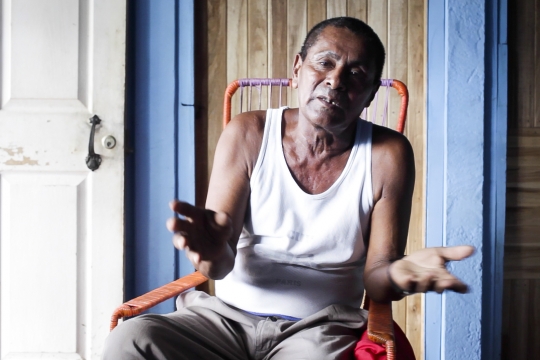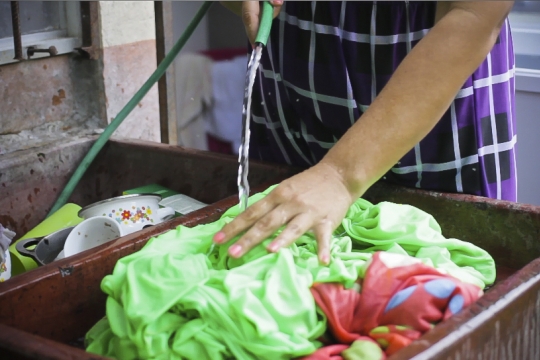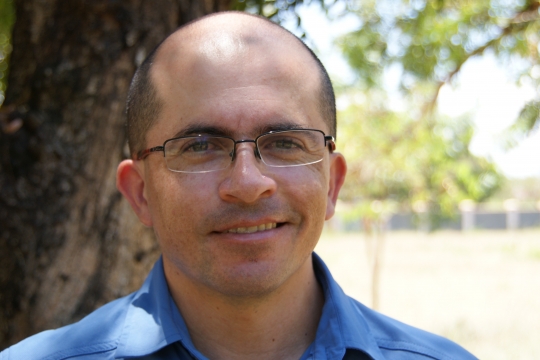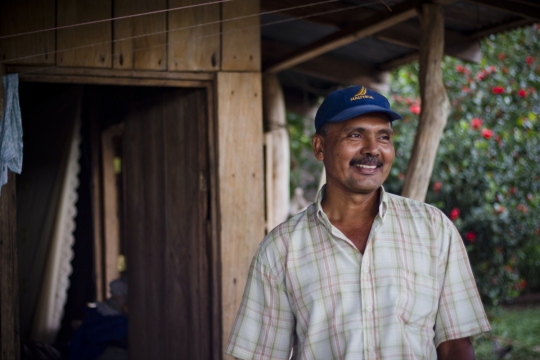People in Central America’s rural areas will face a 20 percent decline of drinking water availability by 2050, estimates show. EfD researchers are now collecting information from 8 000 households in Nicaragua, Guatemala and Costa Rica. The primary aim is to map capabilities and obstacles for communities to adapt, and to provide community leaders tools and skills to respond to drier scenarios. EfD findings also support governmental adaptation policies.
‘In the end, it is not the governments who adapt. It is the people. In their communities, in their houses, they need to adapt and solve the water scarcity problems that they will face in the coming decades. This is why we want to focus primarily on building local capacities to adapt drinking water systems to the predicted drier scenarios’, says Róger Madrigal, senior research fellow at EfD Central America.
He is principal investigator of the research project ‘Water for human consumption, communities and climate change: expected impacts and adaptation in Central America’.
Throughout Central America, there are 24 000 community-based drinking water organizations. These organizations are the most important providers of drinking water in the rural areas of the region. In most cases, they self-organize to provide drinking water and have little if any relationship with the government of the respective country. Most of these organizations have financial and managerial problems that affect their capacity to deliver safe water regularly.
 Róger Madrigal, Senior Research Fellow, EfD Central America, CATIE
Róger Madrigal, Senior Research Fellow, EfD Central America, CATIE
‘Besides all these problems, rural people now also face the threat of climate change. It is the local community leaders that are ultimately responsible for taking decisions to adapt to drier scenarios’, explains Dr Madrigal. ‘As researchers, we are therefore committed to building capacity at the local level. We organize participatory meetings, workshops and small capacity building courses to raise awareness, provide information and share knowledge in an accessible way’.
The EfD researchers focus on 200 communities including 8 000 households, situated in the driest areas of Nicaragua, Guatemala and Costa Rica. The project, funded by the International Development Research Centre (IDRC) based in Canada, started in 2013 and aims to provide input to design adaption strategies at the governmental and community level. It also provides information to governmental bodies, international donors and NGOs about the needs of local people.
The initial estimations from the project’s climate modeling component show that drinking water availability might decrease 20 percent by 2050. To map communities’ and households’ capacity to adapt and respond to drier scenarios, the researchers are collecting information about many different social, economic and organizational indicators. They identify factors that can facilitate or restrict implementation of future adaptation measures, such as infrastructure improvements, new wells and water metering.
Their findings so far show that many communities lack sufficient technical knowledge and management skills, and struggle with financial and organizational problems to effectively implement these critical investments. Further, in many cases, financial and technical support from governments and other external actors are necessary conditions to implement adaptation strategies.
‘Most communities and households need to adapt their drinking water systems to cope with drier scenarios. But most of them also need external assistance. Governments need research based information about how to best support them, for example, by financing infrastructure investments and developing human capabilities’, says Róger Madrigal.
Finally, findings reveal that, when a community has a reliable piped water system, it is much less costly to adapt to water scarcity at the community level than at the individual household level. Estimates from Nicaragua and Guatemala show that, in a community with an unreliable water system, a household’s cost for buying water from additional sources, such as bottled water or drinking water from trucks, is 15 US dollars per month. In communities with highly reliable pipe systems, households spend only two dollars per month in additional sources to fulfill their drinking water needs.
Researchers involved:
Róger Madrigal, Francisco Alpízar, Paul Ferraro, Pablo Imbach, Eugenia León, Chelsia Moraes
In English the project is called Water for human consumption, communities and climate change: expected impacts and adaptation in Central America. See also http://www.efdinitiative.org/central-america/projects/l/ac3-project-water-human-consumption-communities-and-climate-change-expected/2910
In Spanish it is called Proyecto Agua, Comunidades y Cambio Climático, and abbreviated AC3. See also www.aguaycomunidades.org
By Karin Backteman
Video



